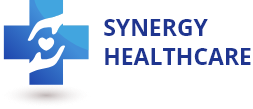Cardiology medical billing and coding are essential to the healthcare revenue cycle because they guarantee that the life-saving services that cardiologists provide are fairly compensated. However, cardiology is a field prone to mistakes and difficulties because of the intricacy of the procedures involved and the specificity needed in the coding. We’ll review the nuances of cardiology coding, the challenges encountered, and typical errors and advise on attaining accuracy.
What is Cardiology Medical Billing and Coding?

Cardiology medical billing and coding translates cardiology services, procedures, and diagnoses into standardized codes used for billing purposes. Such codes are critical so that health care providers are correctly compensated by third-party payers. ICD-10 codes for identification of the diseases, CPT codes for the procedures and HCPCS codes for transportation, etc. all come under cardiology coding.
Correct cardiology coding is the best way to ensure correct payment and compliance with cardiology medical billing and coding guidelines.
Challenges in Cardiology Medical Coding and Billing
Cardiology medical coding and billing is especially difficult because there are so many different procedures and extensive documentation needs. Among the principal difficulties are:
- Complex Procedures: Cardiology encompasses a variety of intricate procedures, such as angioplasties, pacemaker insertions, and electrophysiology studies, all of which require precise coding.
- Frequent Updates: The codes and guidelines used in cardiology billing are frequently updated, requiring continuous education and training to stay compliant.
- Documentation Requirements: Detailed and accurate documentation is crucial for accurate cardiology coding. Only complete or correct documentation can lead to common cardiology billing errors.
- Specialized Knowledge: Coders need specialized cardiology knowledge to understand the procedures’ nuances and correctly assign codes. This is where expert cardiology billing solutions from Synergy HCLS can help healthcare providers.
Common Mistakes and Pitfalls in Cardiology Medical Billing and Coding
When it comes to cardiology medical billing and coding, even the most seasoned coders can make assumptions that lead to common mistakes. Here are some of those mistakes:
- Upcoding or Downcoding: Upcoding is coding a patient encounter for a higher level of service than what was actually rendered, while downcoding is the opposite. Either one can result in compliance issues, and cardiology claim denials.
- Incorrect Use of Modifiers: Modifiers tell payers more about a service, but using them incorrectly can result in denials or lower payments.
- Missed Codes: Failing to bill codes for extra procedures or services can lead to lost income. For example, failing to code for a separately identifiable procedure that was performed during a surgical procedure can have a huge impact on reimbursement.
- Duplicate Billing: Overpayment or audits may occur when the same claim is submitted repeatedly. Even with all precautions, some errors may still occur, hence it is essential to have robust cardiology billing software to track claims and prevent these errors.
Tips for Cardiology Medical Coding and Billing
To ensure accurate cardiology coding and minimize errors, consider the following tips:
- Regular Training: Attend refresher courses on cardiology CPT codes and coding practices. This makes your team know well what proper cardiology coding.
- Use Specialized Software: Use specialized cardiology billing software to deal with cardiology billing and coding complexity. It can cut mistakes and increase efficiency.
- Outsource Medical Billing: Partner with professional medical billing services like Synergy HCLS. Outsourcing can provide access to specialized knowledge, reduce the risk of errors, and ensure compliance with the latest cardiology medical billing guidelines.
- Double-Check Documentation: Ensure that the codes being submitted align with the documentation. Good documentation leads to good coding.
- Implement Quality Control: Periodic audits and quality control measures can catch common medical billing mistakes before they turns costly.
Cardiology CPT Codes
Cardiology CPT codes are specific to the procedures performed in cardiology. Some common examples include:
- 93000 – Electrocardiogram, routine ECG with at least 12 leads
- 93306 – Echocardiography, transthoracic, real-time with image documentation
- 93458 – Coronary angiography with left heart catheterization, including intra-procedural injections for left ventriculography
- 92928 – Percutaneous coronary intervention with stent placement
Accurate billing, and to avoid cardiology billing challenges, requires understanding and proper use of the appropriate cardiology CPT codes.
Summing up
Medical billing and coding for cardiology is a specialty area requiring accuracy, knowledge, and ongoing education. The intricacy of cardiology procedures exacerbates the difficulties faced by healthcare providers, the necessity for precise documentation, and the regular updates to codes. However, these difficulties can be overcome if best practices are followed, specialized software is purchased, and expert services like Synergy HCLS are outsourced. Precise cardiology coding is important for more reasons than merely following regulations; it helps guarantee that medical professionals receive just compensation for their vital services.
With professional solutions tailored to the particular requirements of cardiology practices, Synergy HCLS is a reliable partner in cardiology billing services. By working with Synergy HCLS, healthcare providers can concentrate on providing quality care, leaving the intricacies of cardiology medical billing and coding to the professionals.
